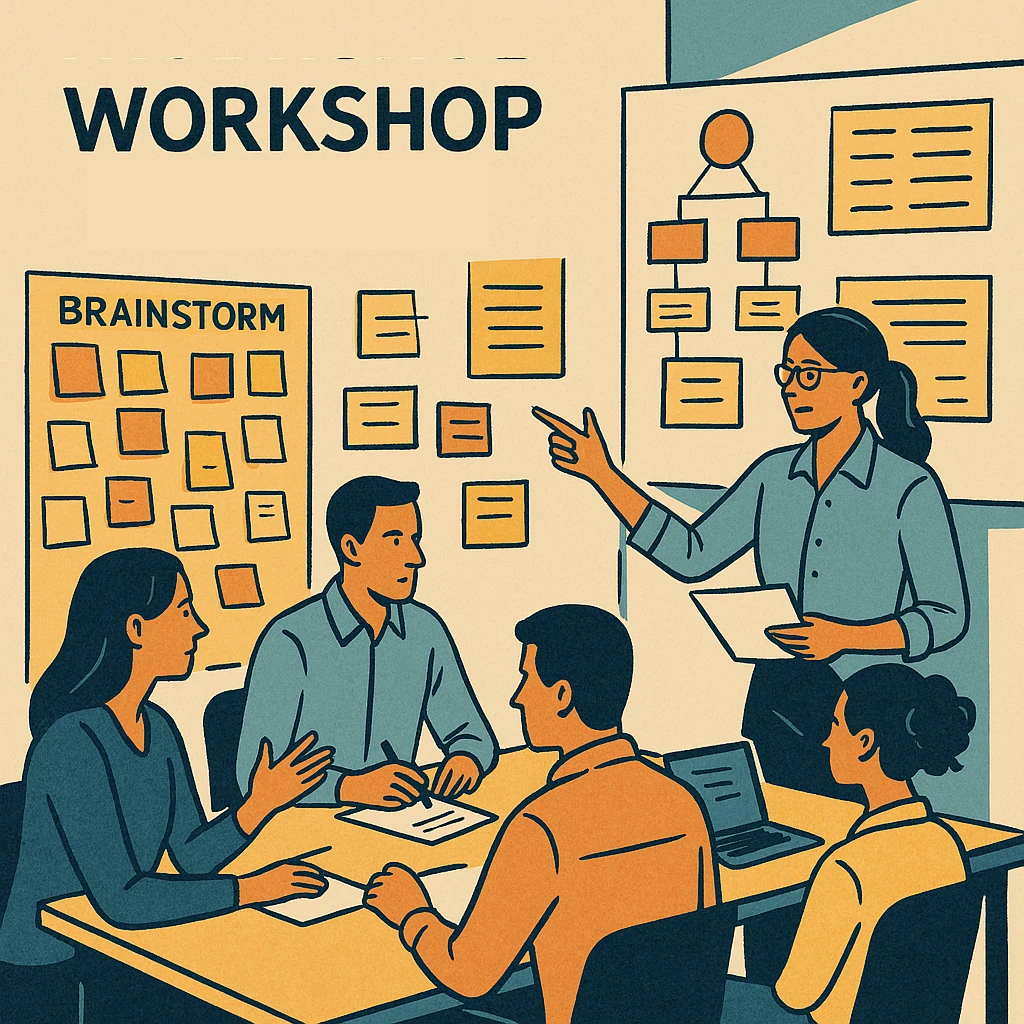💡 Effective Workshops: Turning Ideas into Action #
Workshops are the creative engine of many organizations—a space where ideas are born, challenged, and refined. But too often, a productive day ends with a wall full of sticky notes and no clear path forward. To make sure your workshop outcomes don’t vanish into thin air, you need structure, clarity, and accountability.
🧠 Phase 1: Creative Brainstorming #
Start with an open, judgment-free idea session:
- Encourage all participants to share freely.
- Use techniques like “Crazy 8s,” mind mapping, or silent brainstorming.
- Goal: Gather a wide range of perspectives without filtering too early.
✅ Phase 2: Idea Evaluation #
Time to get analytical:
- Define evaluation criteria—e.g., feasibility, impact, resource needs.
- Use frameworks like the RICE method (Reach, Impact, Confidence, Effort) to prioritize.
- Decide collectively which ideas are worth pursuing.
🧩 Phase 3: Structuring the Ideas #
Give your top ideas a solid foundation:
- Group similar concepts into themes or categories.
- Visualize with roadmaps, Kanban boards, or swimlanes.
- Goal: Create clarity around connections and next steps.
🗂️ Phase 4: Build an Action Plan #
Now it’s time to move from vision to execution:
- Define concrete tasks: What needs to be done?
- Assign responsibilities: Who owns each task?
- Set deadlines: When should it be completed?
🔁 Phase 5: Follow-Up Is Key #
Don’t let the momentum fade:
- Document and share workshop outcomes.
- Schedule regular check-ins to track progress.
- Celebrate wins and capture lessons learned.
🚀 Final Thoughts: Workshops That Deliver #
An effective workshop is more than just a creative exchange—it’s the launchpad for real change. With clear structure, defined responsibilities, and a solid action plan, your ideas won’t just inspire—they’ll get done.

